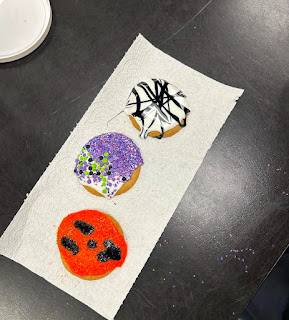Music is one of the many facets of culture that impacts the creative thought of listeners. The simple absorption of a lyric or tune can change the way one thinks. Just as important as the words they sing, musicians are responsible for causing significant changes in the interests of people. Each musician belongs to a particular genre, and through these genres, distinct styles are manifested through lyrics, instrumentals, and fashion. The admirers of each genre also express a similar sense of fashion in comparison to the musician. Through this chain of artistic expression, music leaves its identifiable remnants in the wardrobes of its worshipers.
Much like a specific location can trigger the memory of a person or event, a person’s outfit can remind someone of a certain musician or style of music. This is due to the influence of music on fashion, as well as musicians who double as fashion icons. In the 80s and 90s, rap idols such as Run DMC and L.L. Cool J were renowned for their tracksuits, bomber jackets, bucket hats, and gold chains. These articles of clothing eventually inspired designers like Chanel, who included black, leather jackets and heavily layered gold chains in runway shows. Hip hop trends helped illuminate a multitude of developing brands, making them popular among the general public. Junior Victoria Baron says, “Musicians are largely responsible for important changes in fashion. What we see them wear, we want to try to wear as well.”
Genres like punk rock stimulate torn clothing, Mohawks, and clothing with anarchist symbolism. The Ramones, an early punk rock band, popularized studded leather jackets and Chuck Taylors, epitomizing their grimy, haphazard self-image. Legends of rock and roll are expressed through torn jeans, messy hair, and loose t-shirts tucked in messily. Sophomore Emily Johnson says, “Rock and roll is one of those cultural styles that reflects a lot of raw emotion.” Jazz artists inspired clean lines with fitted blazers, fedoras, Ray-Ban sunglasses, and suspenders. Indie artists inspire the revival of classic, vintage looks, and combine the best of each genre to create a distinctive fashion style. An anonymous sophomore says, “I like the classic vintage look with modern touches, because that’s how indie music makes me feel.”
Elements of other types of music influence people and prominent designers. Fashion shows are always accompanied by music to accent the designer’s collection. Clothing stores apply songs to the atmosphere to enhance displays of apparel.
Some eccentric musicians dress peculiarly, and are strictly meant to inspire instead of being taken literally. Lady Gaga is legendary for her outlandish costume choices, but that gives no reason for someone to dress up like an egg, or cover themselves in meat. Rather, she is to be viewed as an inspiration for bold fashion choices. Prince is also an outspoken connoisseur of fashion, but is meant to inspire a sense of style and represent the beauty of people as a whole. Music so heavily influences fashion because they both express messages.
Music lets people reminisce on the best and worst moments they’ve experienced. These emotions transform to apparel, and are expressed in a different artistic manner. Both music and fashion depict a certain time and location, telling stories through every thread, lyric, and color.























